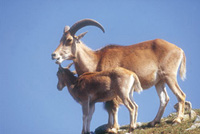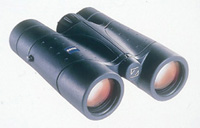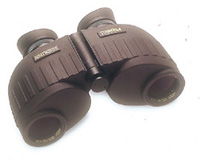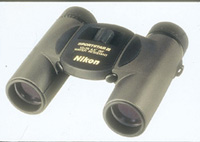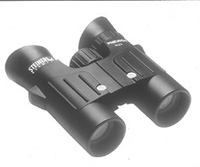The Far View
Whats New In Binoculars
Although we cover new equipment announced at trade shows, binoculars are often overlooked because they're not used for photography. Still, most outdoor shooters do carry binocs as they can be invaluable for scanning or scouting an area to search out potential subjects. Especially in bird and other wildlife photography, binocs can increase your odds of a successful outing. Naturally, this accessory is useful for other types of photography too: sports, boating, butterflies, and travel. At the PMA show in February --and while conducting research later--I found many new binoculars. One fact quickly became apparent while reviewing their specs and trying some of them out. Today's binoculars are generally superior to those made five or more years ago. Thanks to developments in optical glass and anti-reflective coatings, many of the latest models offer a brighter, sharper view and many convenience features. While it's impossible to survey all recent binoculars, let's take a look at recent trends in this field. Discounted prices range from under $100 to "budget" (up to $150) to "mid-priced" (up to $250) to "expensive" (up to $500) to "premium" (from $500 to $3000). Zoom Binoculars |
|||
This Nikon (with BaK-4 porro prism) weighs 33.5 oz, but part of that is related to the rubber armor and oversized objective lens. Weight may be less of a factor with such high power zooms because you'll generally use them on a tripod for a sharp, blur-free image. (All Nikon zooms are budget-priced or slightly above.) If you don't need that much power, the affordable Nikon Action Zoom 7-15x35 (27 oz) should be adequate. Minolta's new ACTIVA binocs (mid-priced; with BaK-4 porro prisms) feature an aspherical element for a compact size while providing sharp images and minimal distortion. The zoom in this series is the 8-22x27FM and it weighs a mere 13 oz, only 3.5 oz more than the conventional ACTIVA 12x25FM. In a middleweight, check out the new Tasco 8-20x26 (porro prism) zoom model at 16.3 oz. Image Stabilizer (IS) |
|||
The image stabilizer, activated with the touch of a button, immediately compensates for hand shake. In the low light of the PMA trade show where I looked through them, the view was amazingly bright. Even the high powered 18x50 model offers a Relative Brightness of 7.8. The image is also very sharp, contrasty, and distortion-free, thanks to the use of an aspherical element, a doublet field flattener, and multi-coated Ultra-Low Dispersion objective elements. Though not inexpensive or compact, these IS binocs offer a unique advantage that will certainly be appreciated by some photographers. Water And Shock Resistance Even less expensive models are often adequately rugged for most field use. One perfect example is the new Pentax 10x50DCF WP (roof prism) series: 8x32, 8x42, 10x42 (mid-priced to expensive), and, the most recent, the (premium-priced) 10x50, all waterproof models. The nitrogen filled, fully water-shielded construction meets JIS Class 6 standards so it can be submerged to 1 meter; the body is also rubber-coated for protection. |
|||
The new (expensive) Olympus Magellan line (with BaK-4 roof prisms) includes the 8x42 and 10x42 EXWP I models. They're waterproof and hydrogen filled to eliminate internal condensation. At 23 oz, they're also lightweight for waterproof binocs with such a wide objective lens. Some other waterproof models are mentioned in other sections of this survey. Even in the $100 range you can find some waterproof, nitrogen filled, and rubber-clad binocs, such as the Phoenix 10x25 IR (roof prism) model with ruby-colored "infrared" coating. Close Focusing Maximum Light Transmission |
|||
The Steiner Nighthunter series--(expensive to premium-priced); ranging from an 8x30 to a 12x56 pair--boasts "more than 95 percent light transmission." According to the tech notes, the German engineers achieved this impressive level with HD lens coating, an inner light absorbing baffle to nearly eliminate internal reflection, and an improved porro prism design. The "new generation" waterproof Carl Zeiss Victory (roof prism) series also boasts light transmission of "over 90 percent" thanks to the use of special prisms with Carl Zeiss T* multi-coating. This (premium-priced) series includes an 8x40 and 10x40 B T* model plus two with an extremely wide diameter objective lens: the 8x56 and 10x56 B T* for observation before sunrise or after sunset. The latter two weigh over 40 oz and offer an extremely bright view, but the 10x40 B T* (25.7 oz) should meet most low-light needs. Wide Angle Design |
|||
Reduced Size/Weight Water-resistant binocs can be heavy, but Nikon's new Sportstar III (8x25 and 10x25) models weigh only 10.4 oz and are only 4" long (under $100). At the other end of the price spectrum (expensive), Swarovski's watertight Pocket 8x20B and 10x25B (with roof prisms) are in the premium-priced category but weigh only 7.6 oz and 8.1 oz respectively; they fold to a width of 2.2". The lightest of the affordable waterproof, nitrogen filled and armor coated 10x binocs that I found are the (expensive) Brunton 10x25 Eterna (roof prism) at 12.5 oz. The Overview |
|||
Binocular Glossary The Numbers: All binocs are designated with a formula such as 8x25. The first number refers to magnification. An 8x25 binocular magnifies the subject eight times. The second number refers to the diameter of the "objective" lens, or front element, so here, the 25 refers to 25mm. The wider the diameter, the greater the light gathering power and the brighter the image. The view through a "fast" 8x50 model is nearly twice as bright as through an 8x35 model and four times as bright as through 8x25 binoculars. Prisms: Used to fold the light path for a shorter barrel--and to invert the image as in an SLR camera--prisms are standard on all binoculars. The traditional "porro" prism models are a bit bulky but provide good depth perception and a wide field of view. "Roof" prisms (denoted by a straight tube) are light and slim, fairly rugged but more costly to manufacture because of special techniques required to achieve high image quality. Either type can be excellent. Many prisms are made with BK-7 glass but the best (for higher edge sharpness and greater brightness) are usually made with BaK-4 glass. |
|||
Exit Pupil: This is the size of the circle of light that reaches your eye. The larger the exit pupil, the brighter the view and the more effective a model will be in very low light. It can be calculated by dividing the size of the objective lens by the magnification of the binocs (e.g., a 7x50 pair has an exit pupil of 7.1mm). The wider the exit pupil, the more useful the instrument is in low light. Image Brightness: Manufacturers employ two distinct methods to denote light gathering ability. First is the "Relative Brightness Index." Some full size binocs have higher brightness indexes in the 16 to 18 range while a 7x50 model may have an Index of 51 for an incredibly bright image. Other manufacturers provide data on the "Twilight Factor." An 8x25 model may have a twilight factor of 14.14 while the factor for 7x50 binoculars is 18.71. The higher the factor, the more suitable a model will be in low-light conditions. Coatings: Like photographic lenses, many binocs' elements are coated with chemical films to maximize light transmission while reducing flare. Note the following definitions. Coated: a single layer on at least one element. Fully coated: a single layer on all elements. Multi-coated: multiple layers on at least one element. Fully multi-coated: multiple layers on all air-to-glass surfaces. The better the coating, the better it will reduce glare and reflection for higher contrast and clarity, plus enhanced light transmission. |
|||
Field Of View (FOV): This is a side-to-side measurement of the actual area visible through a pair of binoculars, when focused at a distance of 1000 yards or meters. The higher the power, the narrower the FOV, of course. The 8x binocs intended for general viewing often have an FOV of 300-375 ft. Some manufacturers provide only the angle of view, with 5-6 being common. Multiply that by 52.5 to get the FOV in feet. Models with an FOV of over 400 ft (or an angle of view of about 8) are particularly useful for scanning a large area or following action subjects.
|
|||
|
|||
| Manufacturers/Distributors |
